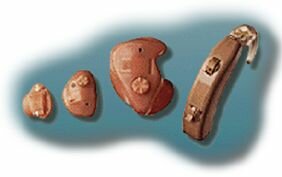
Hearing Aid Projects
Project Description / Hearing Aid Design / Hearing Aids for Children /The Link between Hearing Impairment and Poverty
|
Collaborating Partners
|
|
Giving Opportunities
|
|
|
|
The Affordable Hearing Aid Project (AHAP)
|
The World Health Organization (WHO) estimates that there are at least 250 million hearing impaired people in the world, of which at least half could benefit from a hearing aid. The cost of hearing aids is prohibitively high for the great majority of the hearing impaired in developing countries. Of the six million hearing aids sold worldwide, only an estimated 12% are sold in developing country markets. It is estimated that the annual need for hearing aids in developing countries is at least 32 million units.
The Affordable Hearing Aid Project (AHAP) will design, manufacture, and distribute an affordable, high-quality, digitally programmable analog hearing aid. The project aims to develop and produce high-quality hearing aids that will be within the financial means of programs serving the poor in both developing and developed countries. By reducing the selling price from an average of US $1,500 to a price ranging from $0 (free) to $200, we will make quality hearing aids affordable to everyone who needs them. The price of each individual hearing aid will be determined by the client's ability to pay. The target manufacturing cost for the first generation product is $40. These hearing aids will be suited to the climatic and cultural conditions of the receiving countries. They will be aesthetically unobtrusive, robust, technologically advanced, and locally maintainable. They will also feature a rechargeable battery. Manufacturing and distribution will be self-sustaining from user fees. All revenues will be used for expansion and development of new health care projects oriented toward serving the poor.
In addition to the goal of rehabilitating the hearing impaired, this project aims to create employment opportunities in hearing aid manufacturing and assembly and to reduce poverty by empowering poor people who are hearing impaired to participate more fully in their local economies.
Our service delivery model will be efficient, financially self-sustaining and adaptable to a variety of circumstances. We will endeavor to provide a fully fitted and programmed hearing aid in a two-hour period, instead of the 1-4 weeks it has customarily taken to deliver a hearing aid.As with our eye-care projects, the hearing aid project will implement a business strategy that is sustainable through high-volume sales with low profit margins on each individual sale. This approach stands in direct opposition to the hearing aid industry's prevailing strategy of high profit margins with very low-volume sales. Our specific goal is to produce and sell 500,000 hearing aids in the first five years of the project.
The genesis of this project came from Sir John and Lady Jean Wilson, who are well known for their leadership in galvanizing many individuals and organizations around the world to ameliorate disabilities. Sir John passed away in November 1999, and Lady Jean Wilson continues to actively advise this project.
The total funds raised for this project thus far are US $2.6 million. Major supporters to date include: IMPACT Foundation, UK; Al Noor Foundation (Egypt); 786 Foundation (US), Ashoka, Innovators for the Public (US); Leapfrog Foundation (US) and Acumen Fund (US).
The development of a product that makes use of state-of-the-art programmable technology is an important aspect of the project, enabling the hearing aid to be programmed for each client's specific hearing loss. Presently, more than 50% of hearing aids sold are non-programmable, leading to low customer satisfaction and low uptake in the market. Because of this, eighty percent of the people who need hearing aids in mature markets such as the US and Europe choose not to use them. Additionally, the specifications of "low priced" products available in developing countries have resulted in poor quality hearing aids and low client satisfaction, leading to little demand generation. Each of our hearing aids will be digitally programmable. Making an excellent quality hearing aid affordable to a broader segment of the population will dramatically increase product uptake.
The ability to program the hearing aid also figures into the projects multi-tiered pricing strategy. A protective "firewall" to prevent the product from being passed from a lower price market to a higher price market will be achieved by creating hearing aids that can only be programmed with specific versions of software. The software will enable hearing aid distributors to control product usability within a specific geographic area to prevent trading abuses.
